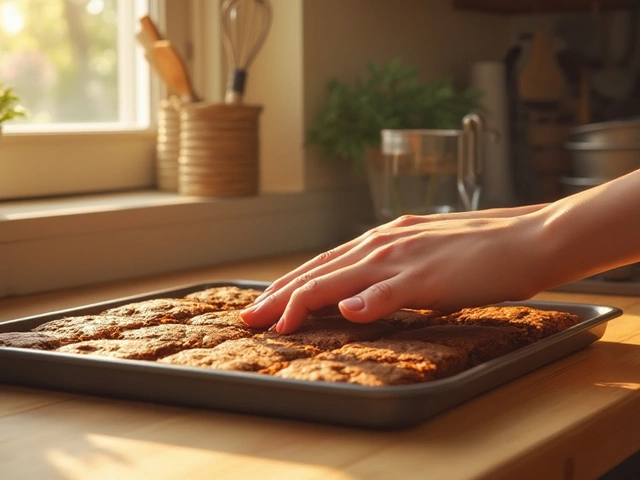Cracked Macarons – What Causes Them and Simple Fixes
If you’ve ever opened a batch of macarons and found split, jagged shells, you’re not alone. A cracked macaron can feel like a failure, but the good news is that most cracks are caused by easy‑to‑adjust factors. Below we’ll break down the usual suspects and give you practical steps to keep your shells smooth and glossy.
Common Reasons Macarons Crack
1. Over‑mixing the batter. When you blend the almond flour and powdered sugar into the meringue for too long, you lose the airy structure needed for a smooth rise. The batter becomes too runny and the shells spread too much, which creates stress that leads to cracks.
2. Under‑mixing the batter. The opposite problem also hurts. If the batter is too thick, it won’t spread evenly. The top dries out faster than the bottom, causing a split in the middle.
3. Humidity. Moist air makes the outer layer of the macaron shell stay wet while the inside starts to set. When the shell finally dries, the moisture inside expands and the shell cracks.
4. Oven temperature. A temperature that’s too hot cooks the exterior too fast. The shell hardens before the interior can expand, and the pressure forces the shell apart.
5. Improper piping. Holding the piping bag too high or using a nozzle that’s too large can deposit a mound of batter that dries unevenly, creating a weak spot that cracks.
Practical Fixes for Perfect Shells
Start with the basics: pre‑measure your ingredients, sift the almond flour and powdered sugar twice, and let the meringue rest for a minute before folding.
When you fold, use a gentle “figure‑eight” motion. Stop as soon as the batter flows like thick lava and slowly levels out on the mixing bowl. If you can lift the bowl and the batter falls back in a smooth ribbon, you’re in the right zone.
Tap your baking sheets against the counter right after piping. This releases air bubbles that can cause weak spots.
Leave the piped shells to rest at room temperature for 30‑45 minutes (or until a light skin forms). You’ll know they’re ready when you can touch the surface lightly without it sticking to your finger.
Set your oven to the middle of the recommended range, usually 150‑155 °C (300‑310 °F). Use an oven thermometer to avoid hot spots. If you suspect humidity, run the oven for a few minutes before the bake or add a small tray of water to the bottom rack to stabilize the environment.
Finally, bake on the middle rack and rotate the tray halfway through. This ensures even heat distribution and reduces the chance of a sudden temperature spike that can split the shell.
By watching these details, you’ll see far fewer cracks and more glossy, uniform shells. The next time you open a batch, the only surprise should be how beautiful the macarons look, not how many of them are split.
Remember, baking macarons is part skill, part science, and part patience. Small tweaks in mixing, resting, and baking can turn a cracked batch into a flawless one. Happy piping!

Why Do Macarons Crack? Simple Reasons and Real Fixes
Cracked macarons can ruin the excitement of baking, but understanding the common causes makes it easier to fix. This article reveals simple, concrete reasons why macarons burst or crack during baking. You’ll find real examples, practical tips, and easy adjustments to help your next batch come out smooth and perfect. If you’re wondering about oven settings, batter tricks, or even tiny mistakes you didn’t notice, you’re in the right place. Everything here is straightforward, to save you time and help you bake with confidence.
View More




